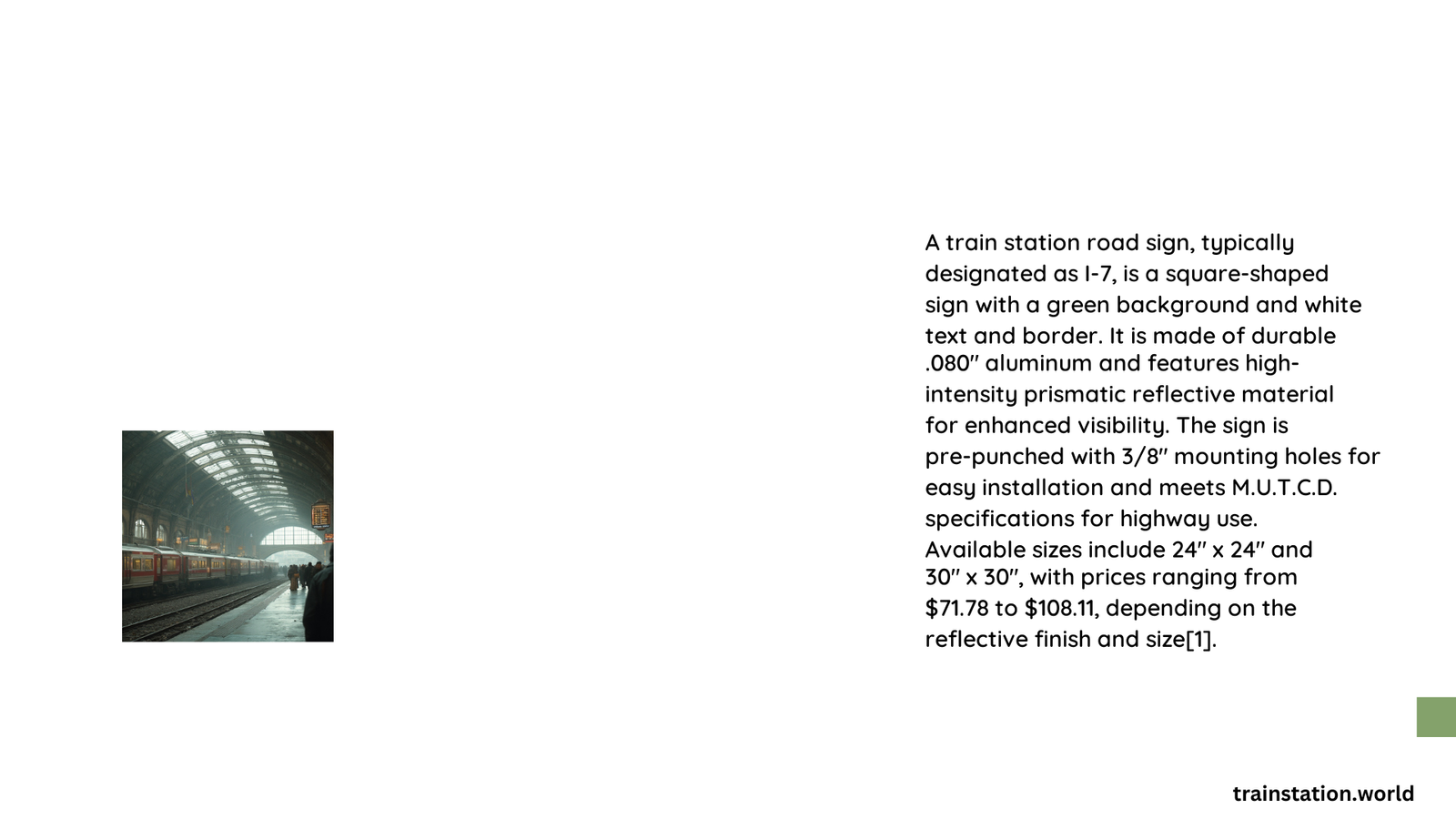Train station road signs are critical components of traffic control systems, designed to alert drivers and pedestrians to the presence of railway crossings and provide essential safety information. These signs use standardized designs, colors, and placement to ensure clear communication across various locations. Understanding the importance and characteristics of train station road signs is crucial for both traffic safety and efficient navigation around railway infrastructure.
What Are the Key Design Elements of Train Station Road Signs?
Train station road signs follow specific design standards to ensure uniformity and clarity:
- Colors: Typically use white backgrounds with black lettering for high contrast
- Shapes: Often rectangular or diamond-shaped, depending on the specific message
- Reflectivity: Incorporate retroreflective materials for enhanced visibility at night
- Symbols: Utilize standardized symbols like the crossbuck for immediate recognition
The Manual on Uniform Traffic Control Devices (MUTCD) provides detailed specifications for these design elements to maintain consistency across different jurisdictions.
How Are Train Station Road Signs Manufactured and Maintained?

The production and upkeep of train station road signs involve several considerations:
- Materials:
- Aluminum or steel for sign blanks
-
High-grade retroreflective sheeting for the sign face
-
Durability:
- Designed to withstand various weather conditions
-
Expected lifespan of 7-10 years for retroreflective materials
-
Maintenance:
- Regular cleaning to remove dirt and debris
- Periodic inspections for damage or fading
-
Replacement when reflectivity falls below minimum standards
-
Cost Factors:
- Size of the sign
- Complexity of design
- Quality of materials used
- Installation requirements
Where Should Train Station Road Signs Be Placed?
Proper placement of train station road signs is crucial for their effectiveness:
- Distance from Crossing: Signs should be placed at a sufficient distance to allow drivers time to react
- Visibility: Must be clearly visible and unobstructed
- Height: Typically mounted 5-10 feet above the roadway surface
- Side of Road: Usually on the right-hand side, with additional signs on the left if needed for visibility
The exact placement depends on factors such as road geometry, speed limits, and local regulations.
What Regulations Govern Train Station Road Signs?
Train station road signs are subject to various regulations:
- Federal Standards:
- MUTCD provides comprehensive guidelines
-
Federal Highway Administration oversees implementation
-
State and Local Laws:
- May have additional requirements or modifications
-
Must comply with or exceed federal standards
-
Railway Regulations:
- Specific rules for signs at grade crossings
- Coordination between highway authorities and railroad companies
How Far Can Train Station Road Signs Be Seen?
The visibility of train station road signs can vary based on several factors:
| Condition | Approximate Visibility Range |
|---|---|
| Clear Day | Up to 1000 feet |
| Night | 300-500 feet (with reflective materials) |
| Heavy Rain | 100-200 feet |
| Dense Fog | Less than 100 feet |
Note: These are general estimates and can vary based on specific sign characteristics and environmental conditions.
What Challenges Affect Train Station Road Sign Visibility?
Several factors can impact the effectiveness of train station road signs:
- Weather Conditions:
- Rain, snow, and fog can significantly reduce visibility
-
Glare from sun or headlights can make signs difficult to read
-
Obstructions:
- Overgrown vegetation
- Parked vehicles
-
Temporary construction equipment
-
Vandalism and Damage:
- Graffiti or stickers covering important information
-
Physical damage from accidents or intentional acts
-
Wear and Tear:
- Fading of colors over time
-
Degradation of reflective materials
-
Poor Placement:
- Signs obscured by other traffic control devices
- Inadequate lighting in surrounding areas
To address these challenges, regular maintenance, proper placement, and the use of high-quality materials are essential.
How Do Train Station Road Signs Enhance Safety?
Train station road signs play a crucial role in preventing accidents and ensuring safety:
- Advance Warning: Alert drivers to upcoming railway crossings
- Behavioral Guidance: Instruct drivers on proper actions (e.g., stopping, looking for trains)
- Regulatory Information: Provide legal requirements for crossing behavior
- Consistency: Use of standardized designs helps drivers quickly recognize and respond to signs
By providing clear and timely information, these signs help reduce the risk of collisions between vehicles and trains at grade crossings.
In conclusion, train station road signs are vital components of traffic safety infrastructure. Their design, placement, and maintenance are carefully regulated to ensure maximum effectiveness in protecting drivers and pedestrians around railway crossings. Understanding these signs and adhering to their instructions is crucial for all road users to navigate safely in areas with train activity.
References:
1. Manual on Uniform Traffic Control Devices (MUTCD) – 2009 Edition Chapter 8B
2. Road signs in the United States – Wikipedia
3. Alabama Department of Transportation Miscellaneous Guide Sign Manual
